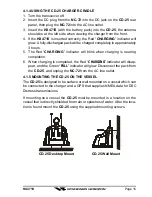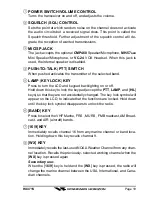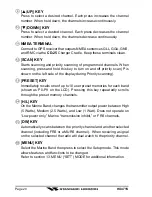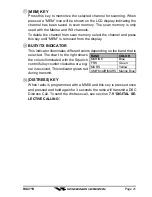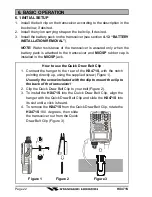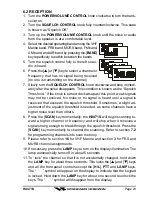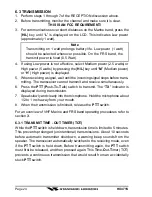
HX471S
Page 11
nautical band are mostly occupied by navigational equipment and transmit
non voice signals in Morse code. If you select a frequency in the upper
range the air is suddenly filled with conversations between pilots and air
traffic controllers, pilots and their company dispatchers, flight service sta-
tions, and ATIS broadcasts. Frequencies within the aeronautical band are
designated according to their usage.
Refer to the page 23 for operation.
AIR
(
Aircraft
)
BAND FREQUENCY CHART
Frequency Range
Communications Usage
108.000 - 117.975 MHz Navigational Aids
118.000 - 121.400 MHz Control Towers
121.500 MHz Int’l Distress Frequency
121.600 - 122.900 MHz Ground & Apron Control
122.700 - 123.900 MHz UNICOM Frequencies
123.450 MHz Air to Air / Pilot chit chat
124.000 - 128.800 MHz Arrivals & Departures
128.825 - 132.000 MHz Company Operations
132.000 - 135.975 MHz Area Control Centre (Enroute)
136.000 - 136.975 MHz Shared ATC/Company Ops & DataLink
MURS
(
M
ULTIPLE
-U
SE
R
ADIO
S
ERVICE
)
Bands
MURS is a private short distance voice communica-
tion service for personal or business activitys of the
general public in the U.S. MURS channels can be
received on this radio. The frequency and channel
number is as follows.
MURS
CHANNEL CHART
1
151.820 MHz
2
151.880 MHz
3
151.940 MHz
4
154.570 MHz
5
154.600 MHz

















